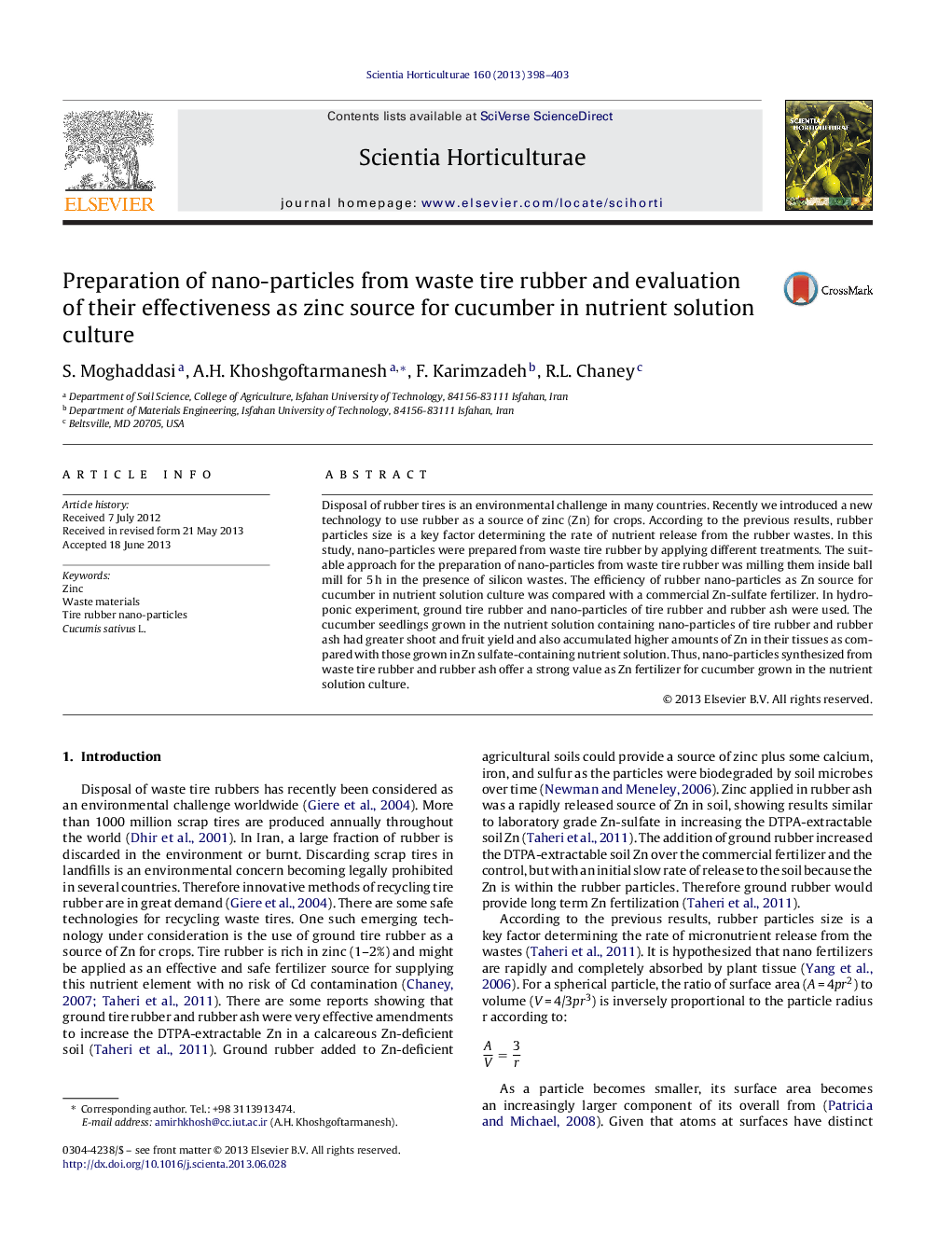| Article ID | Journal | Published Year | Pages | File Type |
|---|---|---|---|---|
| 4566997 | Scientia Horticulturae | 2013 | 6 Pages |
•Zn nano-particles were produced from ground rubber by grinding in combination with silicon waste.•Efficacy of rubber nano-particles in supplying Zn for cucumber was greater than Zn-sulfate.•Higher Zn was taken up by cucumber shoot from nano-particles of rubber than Zn-sulfate.•Nano-particles of rubber could be used as effective source of Zn in nutrient solution of cucumber.
Disposal of rubber tires is an environmental challenge in many countries. Recently we introduced a new technology to use rubber as a source of zinc (Zn) for crops. According to the previous results, rubber particles size is a key factor determining the rate of nutrient release from the rubber wastes. In this study, nano-particles were prepared from waste tire rubber by applying different treatments. The suitable approach for the preparation of nano-particles from waste tire rubber was milling them inside ball mill for 5 h in the presence of silicon wastes. The efficiency of rubber nano-particles as Zn source for cucumber in nutrient solution culture was compared with a commercial Zn-sulfate fertilizer. In hydroponic experiment, ground tire rubber and nano-particles of tire rubber and rubber ash were used. The cucumber seedlings grown in the nutrient solution containing nano-particles of tire rubber and rubber ash had greater shoot and fruit yield and also accumulated higher amounts of Zn in their tissues as compared with those grown in Zn sulfate-containing nutrient solution. Thus, nano-particles synthesized from waste tire rubber and rubber ash offer a strong value as Zn fertilizer for cucumber grown in the nutrient solution culture.
